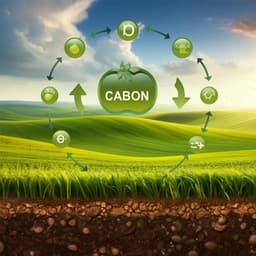
Environmental Studies and Forestry
Fast-decaying plant litter enhances soil carbon in temperate forests but not through microbial physiological traits
M. E. Craig, K. M. Geyer, et al.
This groundbreaking study reexamines the role of soil microorganisms in the dynamics of soil organic carbon (SOC). By challenging conventional beliefs, the researchers, including Matthew E. Craig and Kevin M. Geyer, reveal that high-quality plant litter may actually enhance SOC decomposition rather than stabilizing it, urging us to consider alternative drivers of SOC persistence in temperate forests.
~3 min • Beginner • English
Related Publications
Explore these studies to deepen your understanding of the subject.







